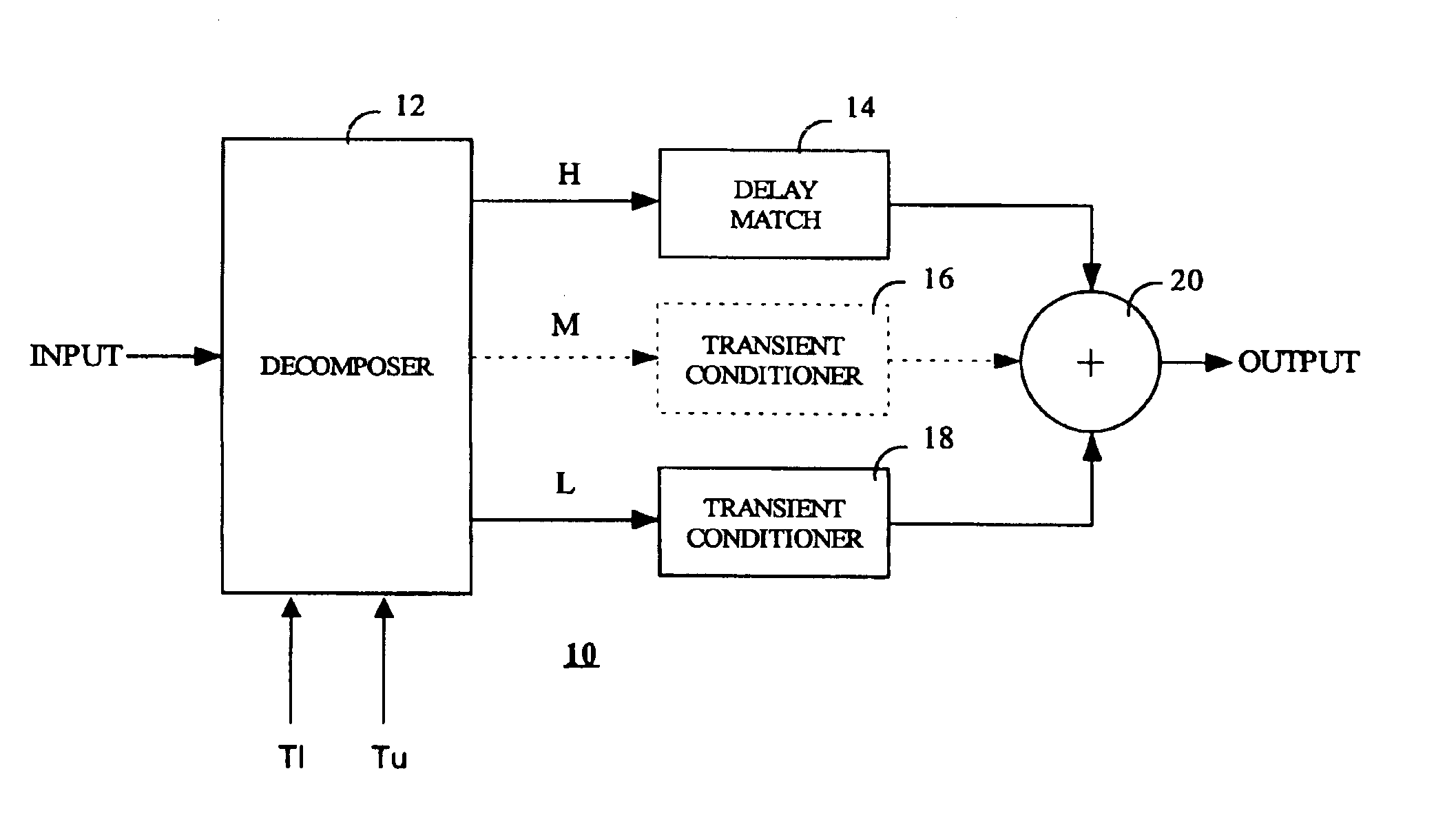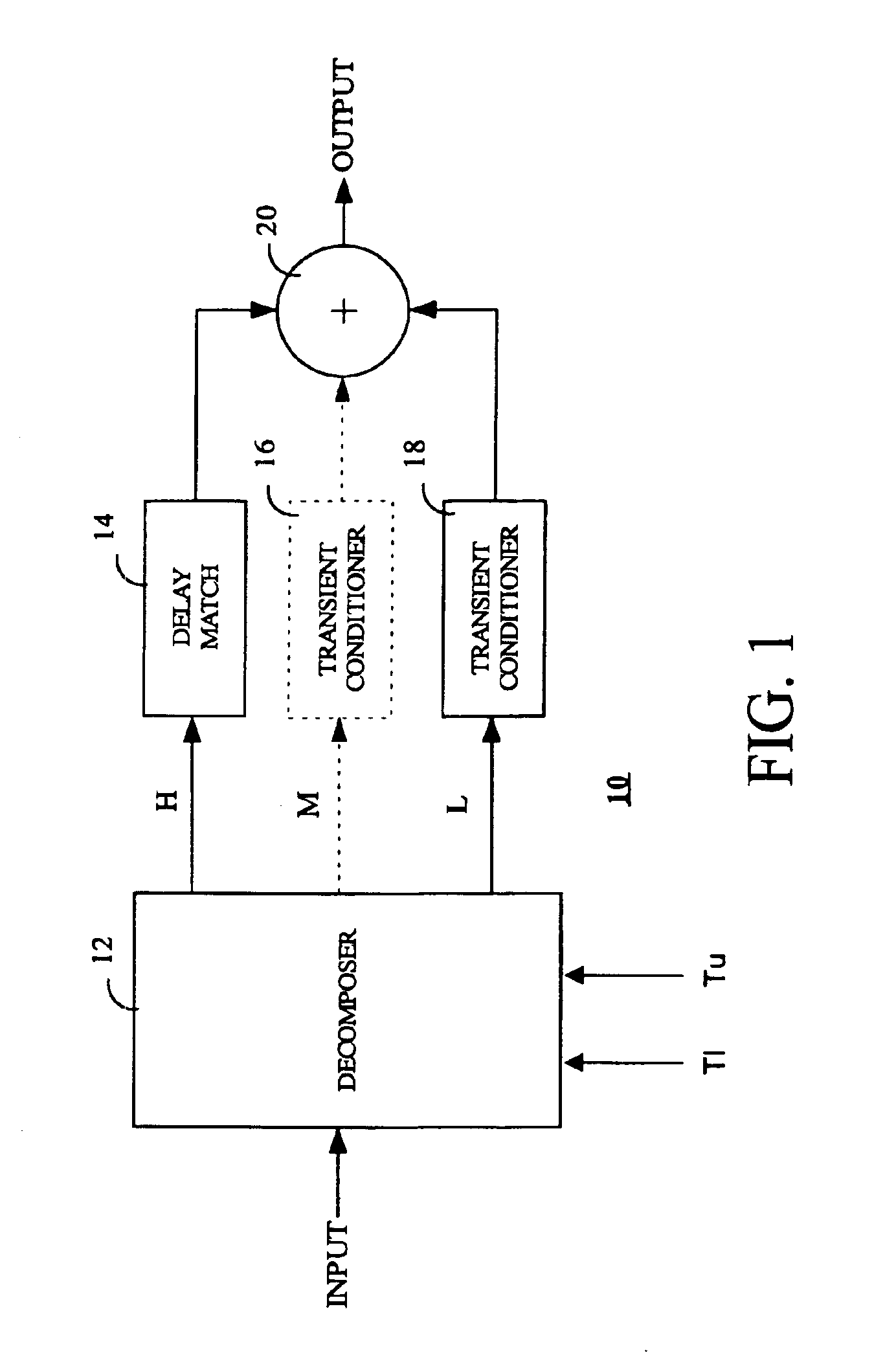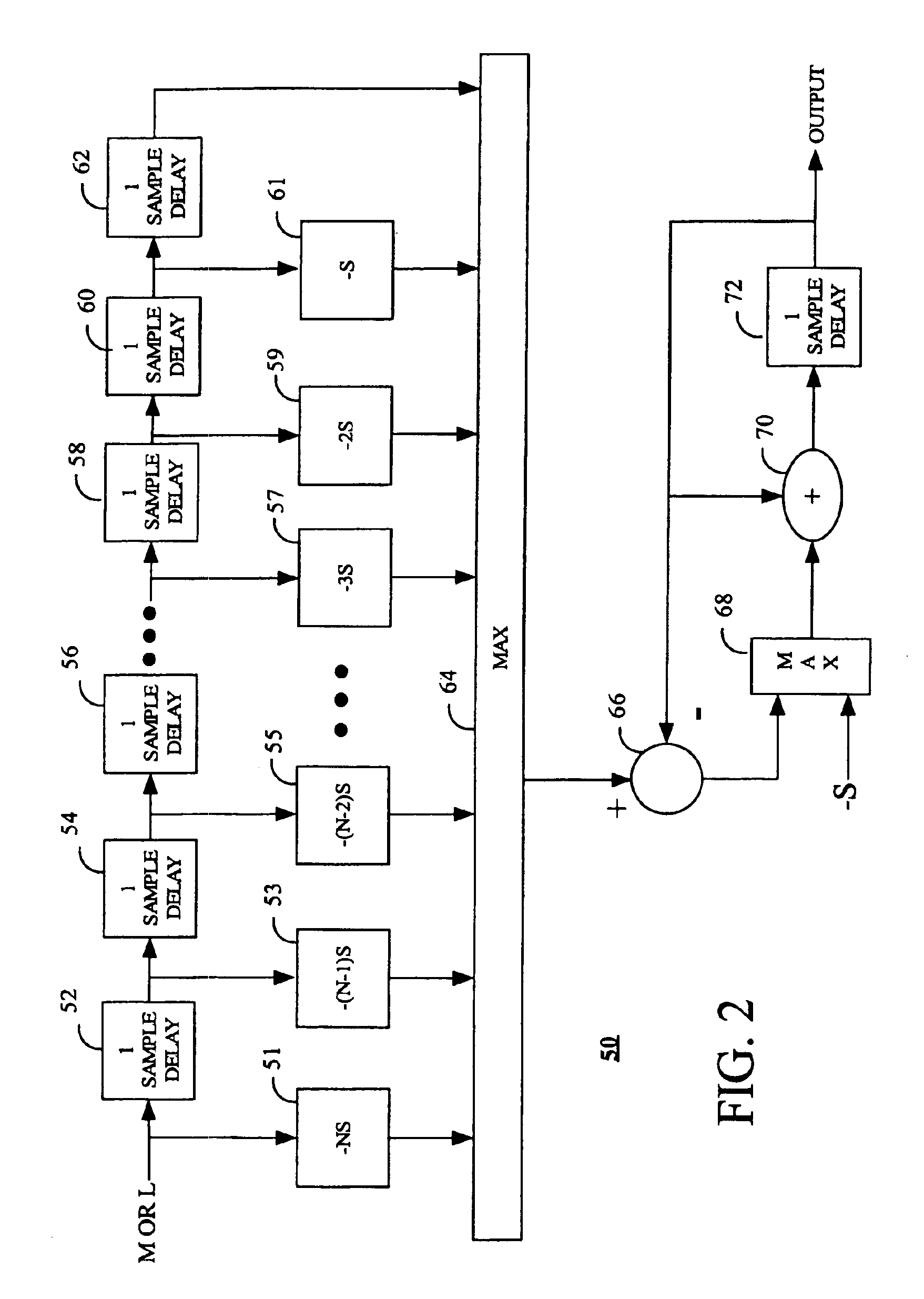Method and apparatus for sparkle reduction by reactive and anticipatory slew rate limiting
a technology of reactive and anticipatory slew rate and sparkle reduction, applied in the field of video systems, can solve the problems of inability to have the imager absorb light, the imager will get hot, and the brightness of the local area is substantial, and achieves the effect of reducing the interdependence of adjacent pixels
- Summary
- Abstract
- Description
- Claims
- Application Information
AI Technical Summary
Benefits of technology
Problems solved by technology
Method used
Image
Examples
Embodiment Construction
[0018]Reducing the difference in brightness between adjacent pixels when they are dark, but not when they are bright can resolve the sparkle problem previously described. A device called a decomposer 12 on the input divides the input signal into at least two signals on a circuit 10 used to reduce adjacent pixel interdependence in liquid crystal displays as shown in FIG. 1. It should be understood that Sparkle or declination errors can also be considered a subset of a broader phenomenon known as adjacent pixel interdependence. It should be noted that the present invention is particularly useful for liquid crystal on silicon (LCOS) displays but is not necessarily limited thereto. The decomposer 12 serves as an amplitude discriminator for the input signal which is preferably an eight (8) bit video signal that preferably carries the desired brightness of one color component (Red, Green, or Blue).
[0019]The input signal is decomposed in a manner that enables obtaining the original signal ...
PUM
| Property | Measurement | Unit |
|---|---|---|
| voltage | aaaaa | aaaaa |
| voltage | aaaaa | aaaaa |
| voltage | aaaaa | aaaaa |
Abstract
Description
Claims
Application Information
 Login to View More
Login to View More - R&D
- Intellectual Property
- Life Sciences
- Materials
- Tech Scout
- Unparalleled Data Quality
- Higher Quality Content
- 60% Fewer Hallucinations
Browse by: Latest US Patents, China's latest patents, Technical Efficacy Thesaurus, Application Domain, Technology Topic, Popular Technical Reports.
© 2025 PatSnap. All rights reserved.Legal|Privacy policy|Modern Slavery Act Transparency Statement|Sitemap|About US| Contact US: help@patsnap.com



